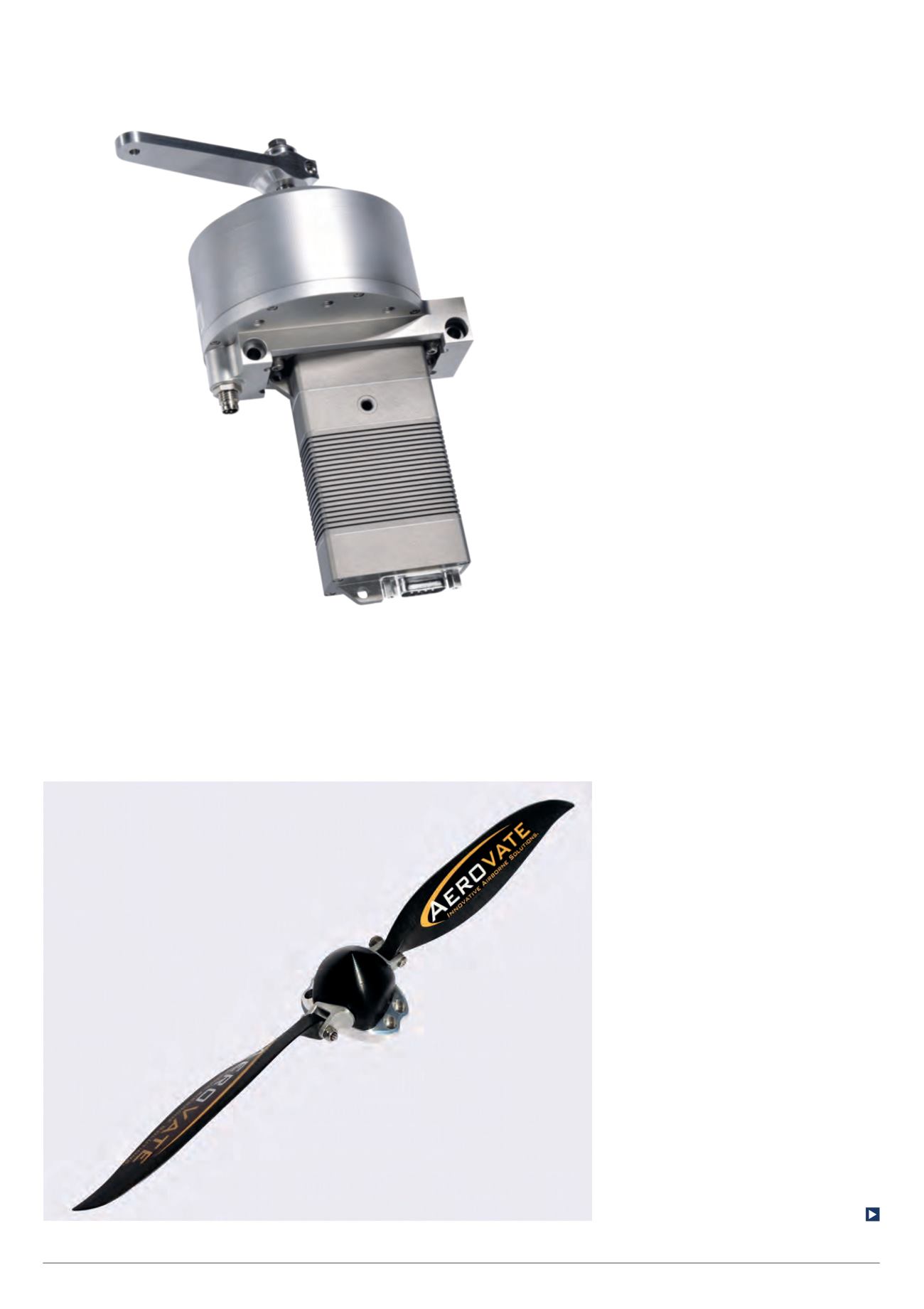

47
AUVSI’s Xponential
|
Show report
the servos into a 300 kg OPV,” Volz said.
Volz also reported the success of the
30 g full brushless servo, the DA15-N,
introduced three years ago. One US
customer bought more than 1000 units
in 2015 to replace a brushed Volz model
that was qualified for 300 flight hours
before replacement; the DA15-N has
proven good for 1500 hours, hugely
reducing the cost per flight hour.
Co-located with propeller
manufacturer Sensenich, Aerovate
attracted interest at the show with
an innovative range of variable-pitch
propellers for UAVs, which the company
describes as being unique in the
industry.
Most small to medium UAVs use
fixed-pitch propellers, which may be
adjustable on the ground. While these
are simple, reliable and inexpensive,
they are inflexible as they must either be
optimised for one phase of the mission,
such as take-off, climbing to operating
altitude or cruising, or make do with a
compromise design that is adequate at
best in all three.
Like a car with a continuously
variable transmission, an aircraft with a
variable-pitch propeller can adapt to the
changing load and speed conditions
to get the best performance available
throughout the flight envelope. However,
propeller pitch change mechanisms tend
to involve costly and expensive hydraulic
or electric actuation.
“It’s self-adjusting, passive, which
means that there are no hydraulics and
no electronics. You simply bolt it on and
go,” said Aerovate’s Andrew Kondor.
The hub is a patented design in which
spring loading applies force towards
coarse pitch, but allows the aerodynamic
loading to overcome that force to push
the blades toward fine pitch.
At maximum thrust during zero
forward velocity, the blades are pushed
to maximum fine pitch; energy is stored
in the spring and gradually released as
forward velocity rises, allowing the spring
to move the blades back to coarse pitch.
The two blades are linked so that any
slight deviations from one side to the
other can be normalised throughout the
whole pitch range.
Propeller sizes start at a diameter of 10
in with two blades up to the largest built
so far, a 37 in three-bladed propeller.
Ultimately, said Kondor, the company
hopes to size them for Rotax 914 engines
in the 100 hp range. One smaller
example has been tested at up to
Unmanned Systems Technology
| June/July 2016
Volz has introduced a range of
clutched servos designed for use
in optionally piloted vehicles
One of Aerovate’s self-adjusting and
variable-pitch UAV propellers









